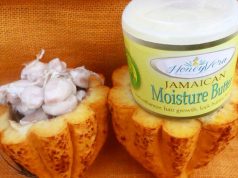Shelly-Ann Fraser-Pryce has the support of a cross-functional Nike team (designers, engineers, and scientists) which has designed a revolutionary pair of spikes for the World and Olympic champion help propel her to make history at 2016 Rio Olympic Games in Brazil.
According to Nike, the new spikes will optimise Frase-Pryce’s strides after bolting out the starting blocks into the three sprint phases — drive (the first 30 meters of the race, maximum velocity (30 – 80meters) and maintenance, keeping her position through to 100-metre mark. The team examined why Fraser-Pryce felt fatigue at this stage.

Sprinters tackle these phases through either a stride-rate or stride-length approach, meaning some sprinters are superb off the blocks while others are experts at catching pace deep in the dash. The gifted runner who can master all phases breaks records.
Shelly-Ann Fraser-Pryce is a prototypical stride-rate runner. Standing at just 5 feet 1 inch, Fraser-Pryce offsets her lack of leg length with an unprecedented technical command of the race. That mastery has won her three world titles, along with gold in Beijing in 2008 and London in 2012. Fraser-Pryce, the fourth fastest woman in the history of the 100m with a time of 10.70, is aiming to defend her 100m and 200m titles at Rio.

The team captured data to measure her speed off the blocks and on the track — further defining her stride characteristics. With this information, they fixated on propulsion and a vital feature of any great running tool: energy return. To optimise that coveted rebound off the track (pushing Fraser-Pryce past fatigue), the group sought to deliver the ideal plate stiffness for the sprinter’s power and foot size.
Their first cues came from nature, with ocean organisms providing a geometrical structural that was both light and stiff. Computational design and rapid 3D prototyping next allowed for a pace of testing fitting of the 100 meters itself: The team quickly produced an array of plates yielding a comprehensive understanding of how much and where stiffness suited Fraser-Pryce’s needs.
Additionally, the process allowed the above-mentioned organic structures to commune with the natural motion of the foot, leading to the creation of a spike plate that eliminated traditional screw-in spikes in favour of fixed pins and an increase of secondary traction. This ensures the foot is closer to the track and, thus, faster off it. Add all the advances together and Fraser-Pryce is moving quicker, for longer, and getting incrementally closer to her next personal best.










